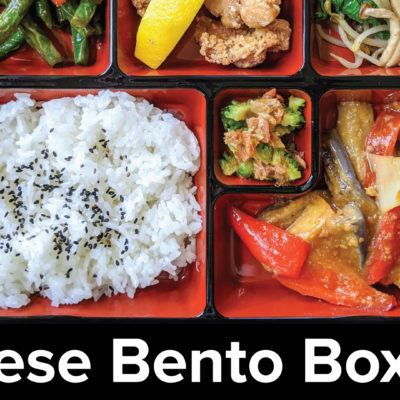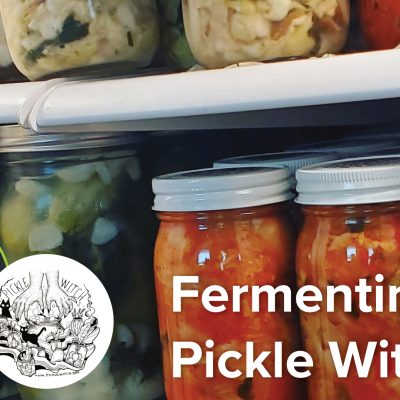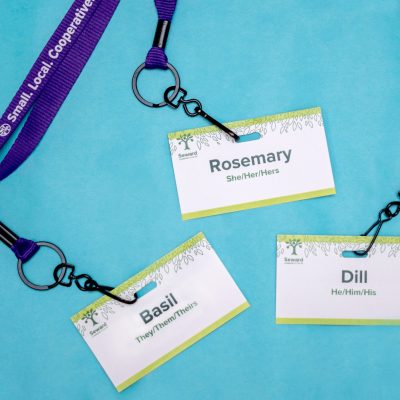
This Saturday, March 28, we’ll be showing you how to make natural dyes for eggs at Seward Co-op. Pop by the store any time from 1-4 p.m. and see how to make great dyes from onion skins, coffee, turmeric, and tea!
We’ll have a recipe for natural egg-dyes in the recipe rack by the Customer Service desk, too, so be sure to grab one, or take a look at the article on egg-dying below.
If you want something a little less DIY, pick-up a Natural Earth Paint’s Natural Egg Dye Kit located on the display island by the Deli Hot Bar. This kit isa set of food based powdered dyes that are incredibly easy to use. Because the dyes are free from the petroleum derivatives and carmine that are found in conventional dye kits, they can also be safely used as a food coloring for baking projects.
New this year, check out the Wooden Egg Craft Kit, a great vegan option for egg dying! These kits include 6 wooden eggs, which are handmade in the Pacific Northwest from sustainable FSC certified wood, and 6 colors of natural earth paints.

Planning on a lamb or ham feast this weekend? We have great specials in the Meat Department that you’ll want to take advantage of! Local heroes Pastures a Plenty, the Lambe Shoppe, and Blooming Prairie will have all your favorite roasts, ribs, and lamb cuts for the big family get together. Let’s hope for grilling weather!
An article on egg-dying from the April/Mary 2014 issue of Sprout! newsletter:

“Celebrate Spring”
It comforts me to imagine that hunting and gathering colored eggs might be one of humanity’s oldest traditions, a way to celebrate our survival of another winter.
I don’t have much evidence for this. Egg painting can be connected to many cultures via folklore and mythology, but there’s no slam-dunk proof that any spring egg-hunt cults are terribly old. One custom, pysanky egg decorating of Ukraine, is more than likely ancient in origin. In excavations of Neolithic and Bronze-Age Ukrainian graves, cultic eggs have been found whose etched patterns are strikingly similar to pysanky “Easter egg” designs (pictured above).
Maybe. Or maybe I’m just feeling sympathy for my cold-climate ancestors after this harsh winter of 2014.
Watching my kids paint and gather eggs, I imagine that I see ancient, first-farming parents, emerging from another brutal Northern Hemisphere winter, keeping their parents’ hunter-gatherer ways alive by teaching kids how to gather wild multicolored eggs in the surrounding grasslands and woods. You know, just in case this new-fangled farming thing doesn’t work out.
How to Make Natural Egg-Dyes
Ingredients: Any number of hard-boiled white eggs
One pot per color of dye
1 Tbsp. white vinegar per cup of strained dye liquid (optional)
Bowls or egg cartons for drying dyed eggs
Paper towels
Don’t be too precious about this process. It’s meant to be fun for you and your kids, so proportions aren’t exact and don’t need to be.
1. Shop …for the veggies and other items that you’ll use for creating your dyes.
Some of these items can be gathered over the days running up to your egg-dying extravaganza. Red cabbage (blue, almost-indigo dye) Red onion skins (lavender or red) Yellow onion skins (orange or gold) Ground or cut turmeric (yellow) Red Zinger tea bags (lavender) Beets (pink; more of a brownish red the longer you leave eggs in this dye) Err on the side of more veggie matter rather than less when creating your dyes.
You can use juices and beverages for dying, too. Grape juice Old red wine Leftover coffee Juice from pickled beets Rule of thumb: If you’d freak out upon spilling a certain liquid on a white shirt, then it’s going to make a decent dye. We mixed some of these veggies to great effect, too. Eggs dyed in turmeric + yellow onion skins were bright gold. I want to try Red Zinger tea + red cabbage next year.
2. Chop …your veggies and prepare your dyes. We found that chopping fine, but not too fine, worked best. We used roughly 4 cups veggie matter for 4–6 cups water. Drop the veggies into the water and bring to a boil, turn heat down to low and simmer, covered, for 15–30 minutes. The dye is ready when it reaches a hue a few shades darker than you want for your egg. Add white vinegar now.
3. Pop …your eggs in the dye. There are two approaches here and both work well. A) Strain the veggie matter out and set your hard boiled eggs in the dye for several hours (or even over night); or B) Set your fresh eggs in the boiling water with the veggie matter and hard-boil them in the dye as it’s being created. The first way will give you clean, solid colors.
The second way is a little more haphazard, but it makes for fun and interesting patterns. After removing eggs from the pots, try draping wet onion skins over the eggs for an hour or two to take advantage of the onion skins’ cool patterns. Ditto red cabbage.
You can experiment also with different amounts of vinegar, too. More vinegar will leave a thick film on the eggs that you can leave on and let dry, making them look gnarly and wonderful (my kids called them “dinosaur eggs”). Or you can rub the film away with a paper towel to find interesting patterns beneath, as the veggies and vinegar will soak into different parts of the egg. Caution: Leaving eggs in too much vinegar overnight will make them rubbery. (Which also might be fun, but not if you plan to eat the eggs.) Dry your eggs in bowls or eggs cartons over night.
* Top photo by Elizabeth Brooks Barnwell
* Pysanky egg photo courtesy Wikipedia.




